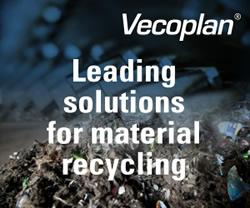NREL Wind Turbine Design Codes Certified
The U.S. Department of Energy's (DOE) National Renewable Energy Laboratory (NREL) announced today that its wind turbine design codes - termed FAST and ADAMS -- can now be used for worldwide turbine certification.
Golden, Colo., August 2, 2005 - The U.S. Department of Energy's (DOE) National Renewable Energy Laboratory (NREL) announced today that its wind turbine design codes - termed FAST and ADAMS -- can now be used for worldwide turbine certification.
Through a joint effort by the NREL and Germanischer Lloyd (GL) of Hamburg, Germany, the world's foremost certifying body for wind turbines, both codes were approved for calculating onshore wind turbine loads for design and certification.
Although many U.S. wind turbine manufacturers have relied on these design codes to estimate the design loads of their turbines in the past, until recently the codes were not accepted by certifying agencies in Europe. To have turbines certified, manufacturers had to re-evaluate designs using European codes or hire European consultants, a process that increased the time and cost of certifying turbines.
The FAST code (for Fatigue, Aerodynamics, Structures, and Turbulence) is a comprehensive aeroelastic simulator capable of predicting both the extreme and fatigue loads of two- and three-bladed horizontal-axis wind turbines.
ADAMS (Automatic Dynamic Analysis of Mechanical Systems), developed by MSC Software, is a general-purpose, multibody-dynamics code with unlimited degrees of freedom that also is used to model robots, satellites, and cars. ADAMS is slower than FAST, but more versatile. FAST is limited to most standard types of horizontal-axis wind turbines; ADAMS with AeroDyn can model almost any kind of horizontal-axis wind turbine. Both require the AeroDyn subroutine library to model aerodynamics.
To gain acceptance of the codes, NREL and GL ran a comparison between FAST, ADAMS, GL's DHAT, and Garrad Hassan's GH Bladed, a widely accepted European code. The latter two codes are similar in design philosophy to FAST. NREL and GL modeled two turbines. To exercise different features of the codes, they chose different types of turbines. The project started with simple comparisons and grew in complexity as the participants gained confidence that all the codes were using the same properties for the models. Results of the comparison will be published in an NREL technical paper and presented by Marshall Buhl, a senior engineer at NREL, at the 2006 American Society of Mechanical Engineers' Wind Energy Symposium in Reno, Nev.
In its report, GL stated that the comparison showed good agreement between the codes. GL granted NREL a certificate for FAST and ADAMS stating that the codes can be considered suitable programs for the calculation of onshore wind turbine loads for design and certification.
For more information about the FAST and ADAMS design codes visit NREL's National Wind Technology Center's Web site at http://wind.nrel.gov/designcodes.
NREL is the U.S. Department of Energy's primary national laboratory for renewable energy and energy efficiency research and development. NREL is operated for DOE by Midwest Research Institute and Battelle.
Featured Product

Vecoplan - Planning and implementation of complete processing plants in refuse derived fuel production
In order to reduce the costs involved in the energy-intensive production of cement, many manufacturers are turning to refuse-derived fuels (RDF), considerably reducing the proportion of expensive primary fuels they would normally use. Solid fuels are being increasingly used - these might be used tyres, waste wood or mixtures of plastics, paper, composite materials and textiles. Vecoplan provides operators of cement plants with proven and robust components for conveying the material and separating iron and impurities, efficient receiving stations, storage systems and, of course, efficient shredders for an output in various qualities.
